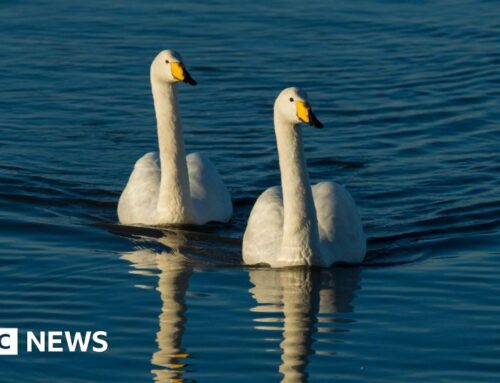New York State DEC begins updating endangered species list
June 9, 2025
BUFFALO, N.Y. — For the first time since 1999, New York’s Endangered Species list is being updated. During this time, extensive work has been underway in the background across the state by the DEC, universities and non-profits.
The first of the five categories has been released. We’re talking fish and a frog.
There’s a rule-making process to update the DEC’s endangered species list. Then there’s a public comment period and hearings. The changes we’re talking about were finalized on April 9 and were first proposed in Aug. 2024.
Shortly after the last time this list was updated, in 1999, a federal program was started called the State Wildlife Grants Program. The idea was to keep species from going on the federal endangered species list. It was a proactive measure and a way to get better information on these species.
Since 2001, researchers have been gathering information. The update to freshwater fish and the Atlantic coast leopard frog is first because that’s the information most readily available. Additionally, DEC added six species that have been listed as endangered or threatened by the United States Fish and Wildlife Service under the federal Endangered Species Act. Federally listed species receive automatic protection under state regulations.
There are improvements for the bluebreast darter and Eastern sand darter. Those can be attributed to improvements in water quality and habitat protection. Improvements to the status of round whitefish are the result of active restoration by DEC in Adirondack waters.
However, the burbot — which is like a freshwater cod — lake whitefish, several species of minnows and the longnose sucker appear to be declining. This has been attributed to invasive species and climate change. That’s making the water warmer, reducing oxygen and creating different weather patterns.
“We’re getting an inch, inch and a half, two-inch rainfalls and sometimes way more than that,” said Lisa Holst, leader of the Rare Fish Unit for the DEC. “And then we’ll have a period of really dry [weather]. And so what happens is the streams dry. They go down, they get very dry and they get very hot. And then you have this flood that comes through and blasts everything out, so it alters their habitat.”
Holst went on to say the water is running off the land so fast, it often doesn’t recharge into the ground, into the aquifers underneath.
Holst says the Atlantic coast leopard frog is new to science — it was only discovered as a separate species in 2018. She says that because of the way the regulations are written, they have no protections at all. So it was decided that it was enough of an emergency to put it in with the fish.
Holst says the rest of the lists will be released as soon as possible. It could go in order of amphibians/reptiles, invertebrates, birds and then mammals.
Search
RECENT PRESS RELEASES
Related Post


